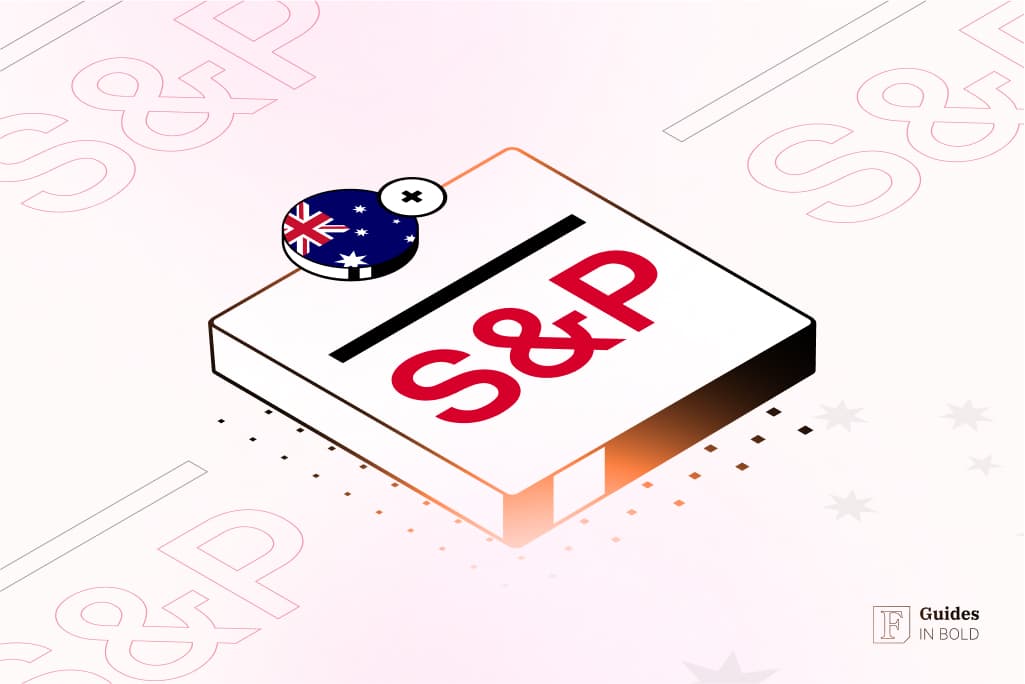Summary: The S&P 500 is a popular stock market index in the United States that includes some of the largest and most well-known companies in the world. One of the most convenient ways to buy S&P 500 in Australia is through a reputable broker platform like Plus500 that offers its stock CFDs.
Recommended Multi-asset Broker for Online CFD Trading
-
Reliable & Regulated by CySEC (#250/14) - Plus500 Ltd is a FTSE 250 company listed on the London Stock Exchange
-
Wide range of instruments - CFDs on stocks, crypto, forex, commodities, ETFs, and more
-
Low cost investing - No commissions and tight spreads.
-
Transparent pricing on overnight funding, currency conversion fees, guaranteed stop orders, and inactivity fees.
-
Advanced platform - Top notch analytical tools, real-time quotes, fast order execution, secure withdrawals
About S&P 500
The Standard & Poor’s 500 Index (S&P 500) is a stock market index that represents the performance of 500 of the largest publicly traded companies in the United States. These companies come from various sectors, including technology, finance, healthcare, consumer goods, and more. The index is widely considered a benchmark for the overall health and performance of the U.S. stock market.

Companies in the S&P 500 index
The S&P 500 index consists of some of the most well-known and successful companies in the world. These companies include giants like Apple, Microsoft, Amazon, Google parent company Alphabet, and many others. The diversity of companies in the index ensures that your investment is not overly reliant on a single industry or company’s performance.
How to trade in S&P 500 in Australia: Step-by-step process
Trading S&P 500 shares in Australia is straightforward through contracts for difference (CFDs). Namely, CFDs allow you to speculate on the price movements of the S&P 500 without actually owning the underlying assets. With this in mind, here’s a step-by-step guide to get you started:
Step 1: Choose a brokerage account
The first step in trading the S&P 500 shares in Australia is to select a reputable CFD broker. You should, therefore, look for a broker that offers access to global markets, competitive spreads, and a user-friendly trading platform.
Our go-to broker in Australia for trading CFDs is Plus500—an ASIC-licensed platform that provides several useful features for all kinds of investors. Some of these include:
- Free demo accounts;
- Multi-asset CFDs on more than 2,000 financial instruments, including stocks, Forex, crypto, ETFs, commodities, and more;
- Mobile trading;
- Convenient deposit options via PayPal, Visa, Mastercard, etc.;
- Free withdrawals.
Recommended Multi-asset Broker for Online CFD Trading
-
Reliable & Regulated by CySEC (#250/14) - Plus500 Ltd is a FTSE 250 company listed on the London Stock Exchange
-
Wide range of instruments - CFDs on stocks, crypto, forex, commodities, ETFs, and more
-
Low cost investing - No commissions and tight spreads.
-
Transparent pricing on overnight funding, currency conversion fees, guaranteed stop orders, and inactivity fees.
-
Advanced platform - Top notch analytical tools, real-time quotes, fast order execution, secure withdrawals
Step 2: Register and fund your brokerage account
Once you’ve chosen a broker, you’ll need to register for an account. This typically involves providing some personal information and verifying your identity. After your account is set up, you’ll need to fund it with capital that you can use to trade the S&P 500 CFDs.
Step 3: Place your order
With your brokerage account funded, you can now place your order to trade S&P 500 stock CFDs. You can either go long (buy) if you believe the index will rise in value or go short (sell) if you expect it to fall. Nevertheless, be sure to set up risk management tools like stop-loss orders to protect your trade.
S&P 500 price today
Common mistakes to avoid when trading S&P 500
One of the most common trading mistakes is not doing enough research. Trading without understanding the markets can lead to poor decisions. Other mistakes to avoid include:
- Overleveraging: Using too much leverage in CFD trading can amplify losses;
- Neglecting risk management: Failing to set stop-loss orders or having a clear risk management strategy can result in significant losses;
- Emotional trading: Letting fear or greed drive your decisions can lead to poor outcomes.
Disclaimer: The content on this site should not be considered investment advice. Investing is speculative. When investing, your capital is at risk.
FAQs about how to BUY/SELL S&P 500 in Australia
Can I invest in the S&P 500 without CFDs?
Yes, you can invest directly in the S&P 500 by using exchange-traded funds (ETFs) or mutual funds that track the index. However, these options may have different tax implications and require a different approach to investing.
What is the minimum capital required to start trading S&P 500 CFDs?
The minimum capital varies depending on the broker. However, it’s typically a relatively small amount, allowing investors to start with a modest investment.
Is it possible to trade the S&P 500 outside of regular trading hours?
Yes, some brokers offer extended trading hours. As such, it allows you to trade the S&P 500 CFDs outside the standard U.S. trading hours.
Recommended Multi-asset Broker for Online CFD Trading
-
Reliable & Regulated by CySEC (#250/14) - Plus500 Ltd is a FTSE 250 company listed on the London Stock Exchange
-
Wide range of instruments - CFDs on stocks, crypto, forex, commodities, ETFs, and more
-
Low cost investing - No commissions and tight spreads.
-
Transparent pricing on overnight funding, currency conversion fees, guaranteed stop orders, and inactivity fees.
-
Advanced platform - Top notch analytical tools, real-time quotes, fast order execution, secure withdrawals




